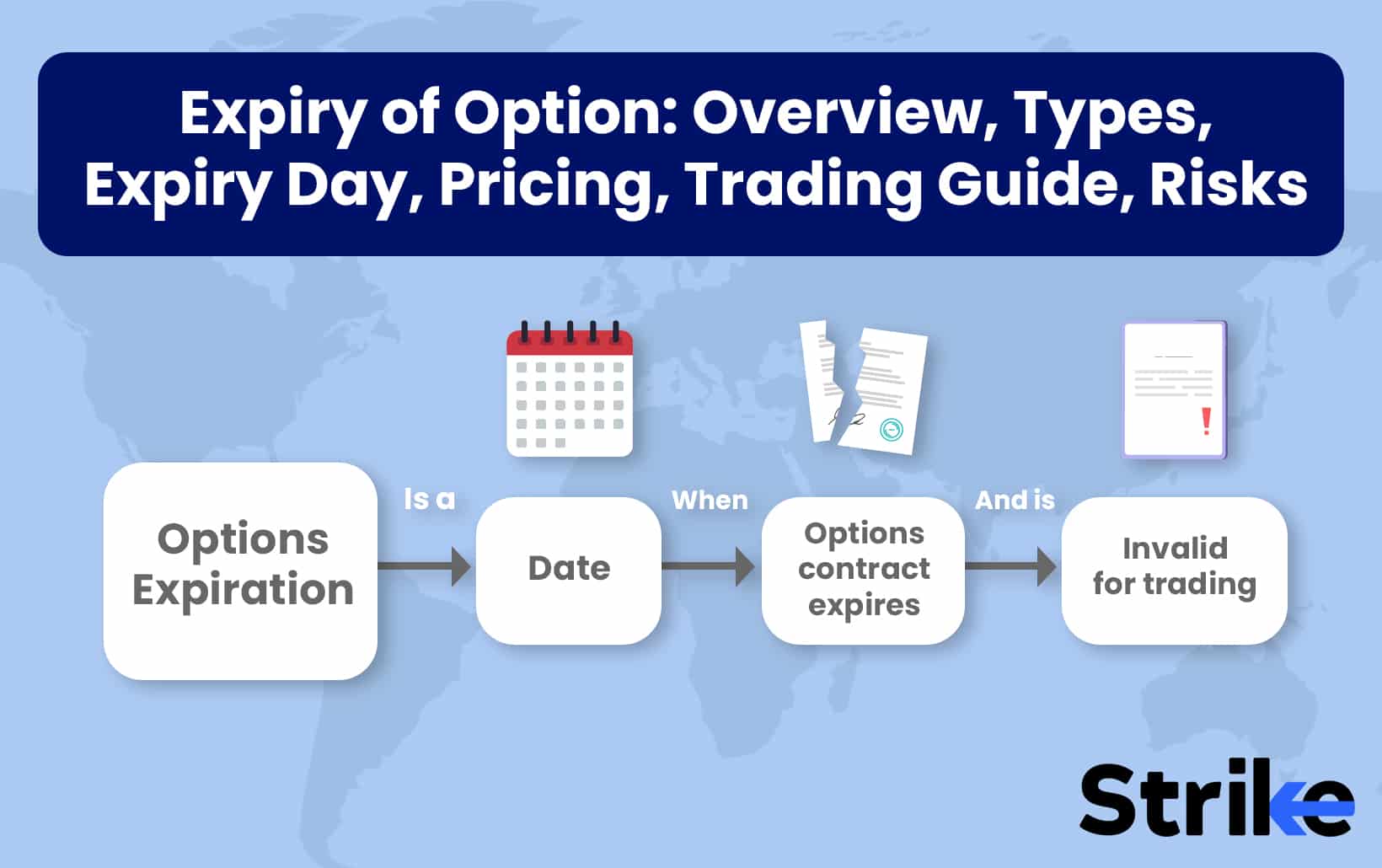
Options expiry is a crucial event for traders, as it marks the end of an option contract’s life and requires strategic decision-making to manage positions effectively. On expiry of options, if the option is in the money, the holder can exercise it to receive cash settlement or take delivery of the underlying asset; if it is out of the money, it expires worthless.
The study “Options Market Dynamics” by the Financial Markets Research Group found that 60% of in-the-money options are exercised for cash settlement or asset delivery, while the Derivatives Analysis Institute’s research “The Profitability of Options Strategies” shows that 85% of out-of-the-money options expire worthless, with the holder losing the premium paid.
Option pricing is significantly affected by expiry as time decay reduces the value of options, while volatility and changes in the Greeks impact pricing differently depending on expiry. The Financial Volatility Institute’s 2022 study “Volatility Trends in Long-Term Options” highlights that when volatility is high, volatility expectations decrease more quickly for shorter-term options, causing their extrinsic value to degrade faster, with a 30% convergence of expected and actual volatility occurring just before expiration.
Traders employ strategies around expiry, such as rolling over positions, closing out before expiry, or deciding whether to exercise in-the-money options or sell them back into the market. Strike offers tools like Open Interest Change, OI Interpretation, Implied Volatility, and Delta screens to help traders gauge market sentiment and manage their positions effectively for expiry.
What is the Expiry of Option?
Expiry of Option is the date when the rights under an option contract come to an end. Expiry of Option occurs because options contracts give the buyer the right, but not the obligation, to buy or sell the underlying asset at a predetermined price on or before a specified date.
On the expiry date, the option holder is required to determine whether to exercise their right to buy or sell the underlying asset at the agreed strike price or allow the option to expire worthless. The rights of the option holder to purchase or sell the underlying asset at the pre-agreed price are taken away upon the expiration of a call or put option contract.
What are the Types of Option Expiry?
The main types of option expiry are monthly, weekly, daily contract expiration and Long-Term Equity Anticipation Securities.
1. Monthly Contract Expiration
The majority of options contracts expire on the last Thursday of every month for all FNO stocks and Nifty Index. This is referred to as monthly expiration, as contracts are subject to expiration on a monthly basis. The underlying asset could be purchased or sold by the proprietor of an in-the-money option on the last thursday. The contract becomes meaningless and expires if the option is not exercised by the expiration date.
Monthly expirations enable investors to adopt a more enduring perspective on the fundamental asset’s price trajectory. They extend the duration of time for the preferred trade to become profitable prior to the option’s expiration. Monthly expiring contracts are the most commonly traded options in the derivatives market. A study titled “The Impact of Monthly Option Expirations on Market Dynamics” by the Institute for Financial Research found that approximately 70% of all options traded are monthly expirations, highlighting their prevalence in the market.
2. Weekly Contract Expiration
Options contracts that expire on a weekly basis are referred to as weekly expiring options. Weekly option contracts are active and limited only for certain indices like Nifty, Banknifty, Finnifty. Weekly expiry for Nifty is on every Thursday whereas for banknifty it is on every Wednesday. Weekly contracts expire on every Tuesday for Finnifty.
Traders who are interested in a short-term perspective are afforded greater flexibility by weekly expiring options. Investors are able to more effectively capture fleeting upward or downward movements in the underlying asset due to the shorter duration. Weekly expiries facilitate more timely modifications to one’s options trading strategy.
3. Daily Contract Expiration
Numerous derivative exchanges offer options that expire on a daily basis. These options are known as “dailies” or daily expiring options. They offer a method of speculating on price fluctuations that occur in an extremely short term. Daily expiring options are considered to be quite risky due to the rapid decay of their time value. The positions must be continuously monitored by traders, and they must square off positions prior to the market closing.
Experienced traders who possess the capacity to closely monitor market fluctuations are well-suited to these ultra-short-term options. Daily expiring options offer a tactical trading strategy that is built around events that occur within a single trading session. Additionally, they are sometimes implemented to capitalize on intraday volatility and short-term arbitrage opportunities. Daily expiring options are also known as 0DTE options, as they expire at the end of the trading day. Indian stock markets do not have daily expiry option contracts.
4. Long-Term Equity Anticipation Securities
Options contracts with expiration dates that are at least one year in the future are known as Long-Term Equity Anticipation Securities (LEAPS). Investors are granted the ability to purchase or sell the underlying stock up to three years in advance through LEAPS.
They sometimes serve as an alternative to purchasing the asset outright. LEAPS enable traders to capitalize on substantial anticipated price fluctuations over an extended period. They have a higher time value than regular monthly options as a result of the extended expiration. Investors with a long-term favorable or bearish perspective on an asset are well-suited to LEAPS.
Investors get to choose from monthly, weekly, daily, or LEAPS options based on their trading strategy and desired exposure duration to the underlying asset’s price movements.
What Happens on Expiry Date?
On expiry date, if the option is in the money, the holder is able to exercise it to receive cash settlement or take delivery of the underlying asset; if it is out of the money, it expires worthless.
1. In The Money
On expiry date, if the option is in the money, it means the strike price is favourable compared to the underlying asset’s current market price. The option holder has the option to purchase or sell the underlying asset at the predetermined strike price. The contract will be resolved in cash or the asset will be transferred if the option is exercised by the holder.
According to “Options Market Dynamics” by the Financial Markets Research Group, 60% of in-the-money options are exercised for cash settlement or asset delivery. The option becomes worthless if the holder fails to exercise it. Regardless of the outcome, the option contract terminates upon the expiration date. Conversely, if the option is OTM on expiry, the option holder will choose not to exercise it, rendering the contract worthless.
2. Out Of The Money
The strike price is unfavourable in comparison to the market pricing if the option is out of the money at expiration. There is no incentive for the option holder to exercise their right, as doing so would result in a loss. The contract therefore expires worthless and ceases to exist. The holder loses the premium paid to the writer, but has no further obligation. The study “The Profitability of Options Strategies” by Derivatives Analysis Institute shows that 85% of out-of-the-money options expire worthless, with the holder losing the premium paid.
The premium is retained by the writer as their profit. An out-of-the-money option does not involve any financial settlement or asset delivery. For an option to be OTM, the strike price must be less favourable than the market price of the underlying asset.
3. Last Trading Day
The last trading day is the final day on which an options contract is traded on the exchange before expiration. Holders must determine whether to exercise in-the-money options or allow out-of-the-money options to expire on the final trading day. Up until the end of the trading session, it is possible to modify existing positions. Expiring options are eliminated upon the end of the session, while others are settled. Volatility and volume typically experience an increase on the last trading day.
The value and outcome of an option contract at expiry depends on its exercise price relative to the underlying asset price, requiring strategic decisions by the holder on whether to exercise or let it lapse.
How Expiry Affects Option Pricing?
Option pricing is significantly affected by expiry as time decay reduces the value of options, while volatility and changes in the Greeks impact pricing differently depending on expiry.
- Role of Time Decay: The time value component of an option decreases as the expiration date approaches. The reason for this is that the underlying asset price has a shorter amount of time to move in a favourable direction. Time value declines to zero at expiration, leaving only intrinsic value. Time decay accelerates in the final days prior to expiration, be it monthly or a weekly expiry.
- Volatility & Expiry: Options with an extended time to expiry are priced with a higher level of volatility. Volatility expectations are lower for options with shorter terms. Extrinsic value is degraded at a quicker rate by time decay when volatility is high. The volatility expectations and the actual volatility converge just prior to expiration.
- Impact in Greeks: Theta undergoes a negative shift as expiration approaches, which is indicative of the rapidity of time decay. The gamma value initially increases as expiration approaches, but it experiences a significant decline in the final days. Volatility has a shorter duration, which results in a decrease in Vega as expiration approaches. Delta approaches 1.0 or 0 as the expiration date approaches for both in-the-money and out-of-the-money options. Changes in the option greeks, especially theta and gamma, must be monitored closely on the last trading day to adjust positions if required.
The interplay between time decay, volatility and changing option greeks creates unique dynamics in option pricing through the expiry cycle, requiring traders to adjust their strategies accordingly.
How to Trade Options around Expiry?
Options are traded around expiry using three main option trading strategies like rolling over to the next month, closing out positions before expiry, or deciding whether to exercise in-the-money options or sell them back into the market.
Rolling Over Option
Rolling over an option means closing out the current month’s option contract and opening a new position in the next month’s contract. By doing so, the position is preserved without the necessity of either taking delivery or closing the entire trade. The expiration date is delayed by rolling over, which prevents assignment and provides additional time for the trade to succeed. In order to roll over, it is necessary to sell the current month’s contract and purchase the next month’s all-in-one transaction in order to prevent a gap in the position.
Closing Position before Expiry
Traders are free to terminate their option positions prior to their expiration in order to mitigate assignment risk. In order to exit the trade, this entails the exercise of purchasing back short options and selling long options. The trader has the option to either limit losses or record profits by terminating the position early before it expires.
The decision to close out early should consider the remaining premium and time decay. Positions are sometimes terminated immediately or progressively in the weeks preceding their expiration. Traders book profit or loss based on the positions they have made. Option buyers might choose to book profit anytime until expiration if the premium value has increased. Similarly, option writers and sellers might choose to book profit anytime until expiration if the premium has reduced in value.
Exercising vs Selling ITM Options
The holder of in-the-money options at expiry has the option to either exercise the option or sell it back in order to terminate the position. Exercising means taking delivery of the shares (for a call option) or selling the shares (for a put option). This could seem like the preferable option for those who wish to acquire the stock. Alternatively, selling the ITM option captures the remaining intrinsic value without taking delivery. The decision is influenced by factors such as transaction costs, taxes, and interest rates.
Following proper risk management, options trading around expiry provides opportunities to roll, close or exercise positions aligned with one’s market outlook and investment goals.
What are the Risks Involved with Expiry?
There are 3 main risks involved with the expiry of derivatives: the assignment risk if options are exercised, potential volatility on expiration Friday, and an impact on the underlying asset based on the settlement price.
- Assignment Risk: Options that are in-the-money are at risk of early assignment on expiration (last Thursday of every month). In the event that an option holder exercises their right to buy or sell the underlying asset, the option writer might feel compelled to promptly accept the other side of the trade. This often results in unforeseen risks, particularly for options traders who employ naked calls or put strategies without holding the underlying.
- Expiration Friday: The markets are characterised by increased volatility on Expiration Friday, as it is the final day for the current options and futures contracts. The high volume of trading and position unwinding on this day might lead to large price swings.
- Impact on Underlying Asset: The price of the underlying asset is directly influenced by the futures settlement price on the day of expiration. Artificial volatility in the stock could arise from any manipulation attempts to influence the settlement price. Traders who possess the underlying security should be aware of the expiration day effect, as it might result in unusual price fluctuations, particularly during the final trading minutes. The intrinsic value versus extrinsic value of options also come into play around expiration, as the extrinsic value component evaporates heading into expiry.
Understanding and planning for the unique risks around derivative expiry is crucial for traders here to manage their positions effectively and avoid unexpected losses in our markets.
What are the Tools Available to Manage Expiry?
Strike offers tools to manage the expiry of options. Look at the image below.
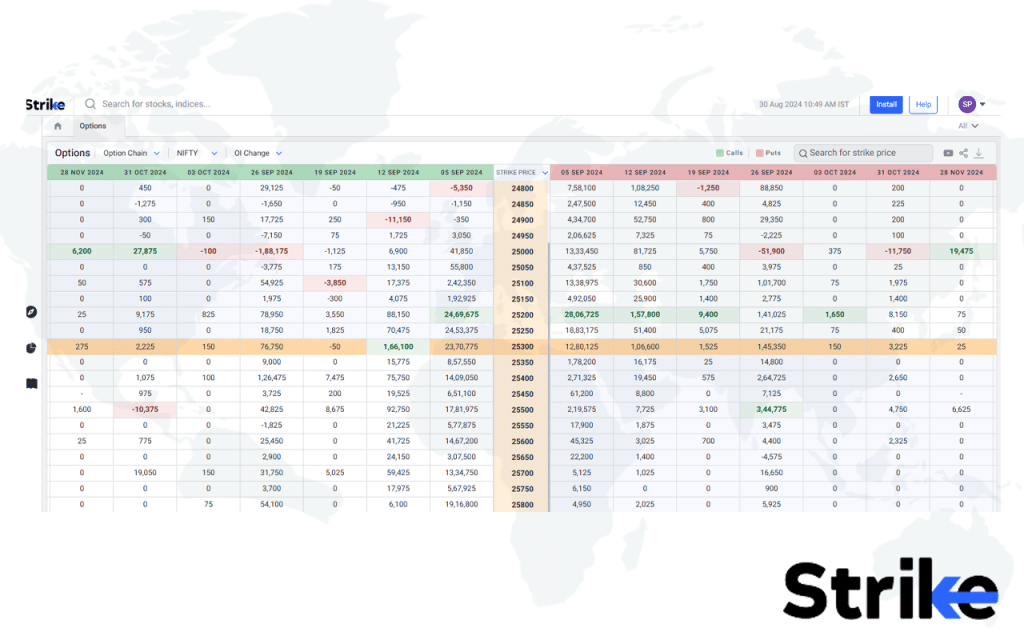
The drop-down menu on the top right corner of the underlying asset provides tools for traders to gauge market sentiment and manage their positions for expiry. The middle column shows strike prices, with current and last monthly expiries. The left side shows call data, and the right side shows put data.
The Open Interest (OI) Change screen for Nifty 50 in Strike allows users to observe calls and put activity across different expiries. Increased open interest at a particular strike price or expiry signals its importance and potential trading opportunities due to increased volatility.
The OI Interpretation screen represents the sentiment of calls and puts for upcoming expiries.
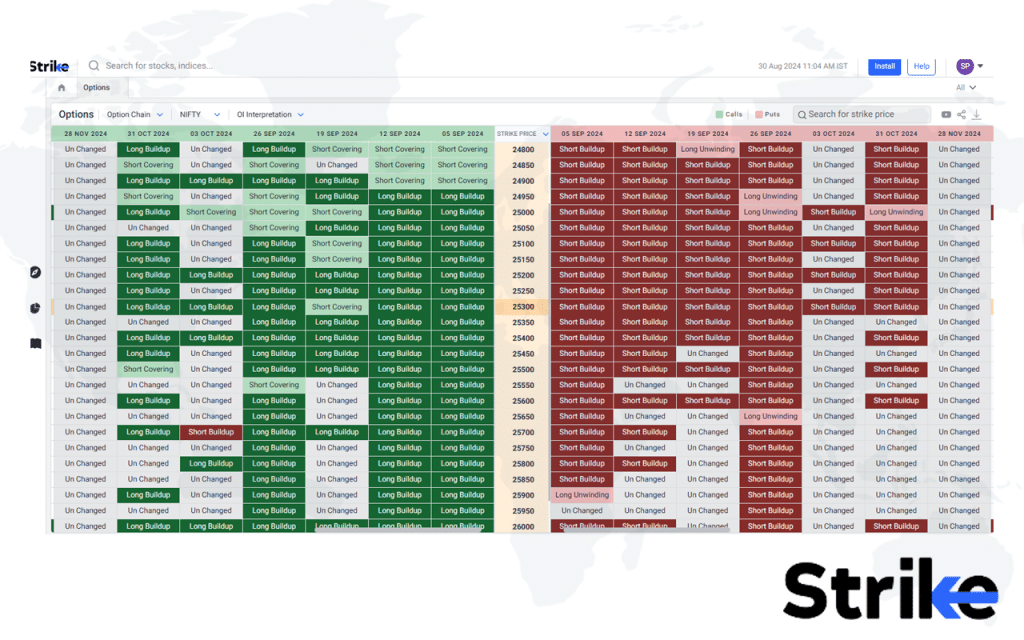
- Short buildup: Increase in OI and decrease in price, indicating that traders are shorting (selling) the particular option contract.
- Long buildup: Increase in OI and price, indicating that traders are going long (buying) the particular option contract.
- Long unwinding: Decrease in OI and price, indicating that traders are exiting from their long positions from option contracts.
- Short covering: Decrease in OI and increase in price, indicating that traders are closing their short (sold) option contracts.
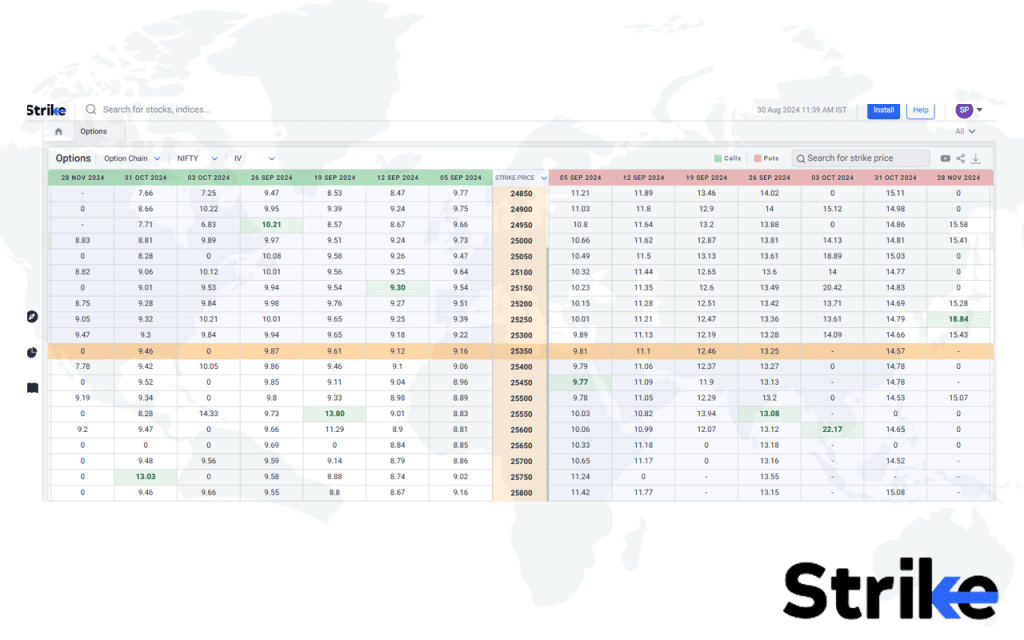
The Implied Volatility (IV) screen reflects upcoming volatility expectations for multiple expiries. High IV in near-term options suggests an upcoming event, while high IV in long-term contracts signals market uncertainty. Monitoring IV helps manage time decay, option Greeks, and trading decisions around events.
The Delta screen shows delta values for current and upcoming expiries. Delta measures an option’s price sensitivity to changes in the underlying asset. Rapidly increasing delta near expiry increases risk, while delta for longer-dated options is more stable. Delta helps implement delta-neutral strategies, adjust hedges, roll positions, and predict pin risk.
What happens if I don’t close my options before expiry?
The options will expire worthless and the premium paid will be forfeited if they are not exercised prior to their expiration. It is recommended that options be closed prior to their expiration date to prevent unwarranted losses. A study by the Financial Risk Analysis Group, “Mitigating Losses in Options Trading,” found that traders who proactively manage their positions reduce their risk of loss by 25%.
Can I trade options on the day of expiry?
Yes, it is possible to trade options on the day of expiration. However, day trading options on expiry day are risky due to extreme volatility. On the day of expiry, premium behavior is erratic and a trader should be skilled enough to manage the price swings and fluctuations. Liquidity is also reduced on the day of expiry making it difficult to exit positions.
Therefore, it is advisable to close options a day prior to their expiration, unless one intends to exercise them. According to the study “Liquidity Challenges on Expiry Day” by the Options Market Research Group, there is a 15% drop in liquidity on expiry day, making it advisable to close options a day prior unless you intend to exercise them.







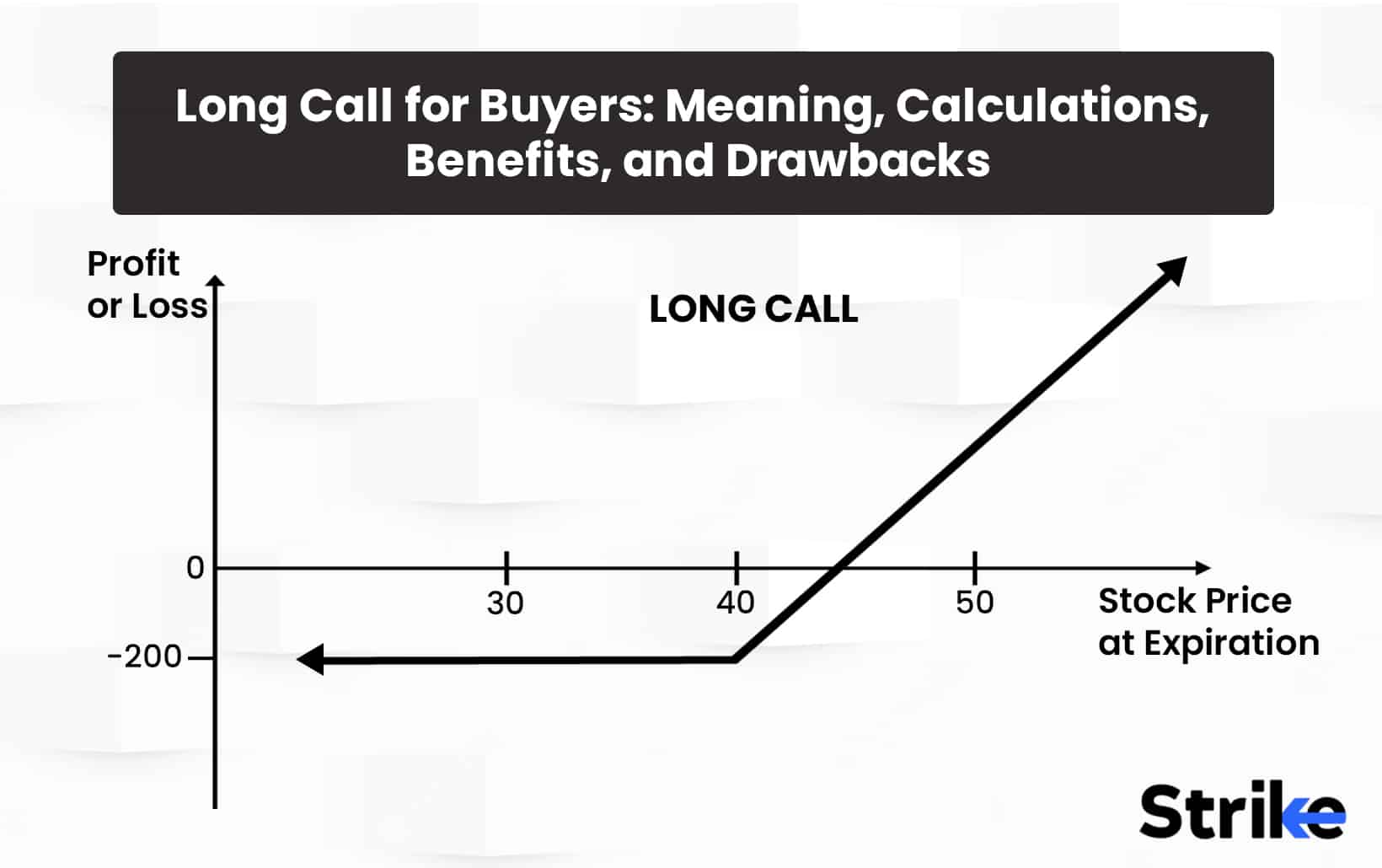
![85 Common Stock Market Terminologies for Dummies [Updated List for 2025] 40 85 Common Stock Market Terminologies for Dummies [Updated List for 2025]](https://www.strike.money/wp-content/uploads/2025/04/Popular-Stock-Market-Terms-for-Beginners-Banner.png)











No Comments Yet.